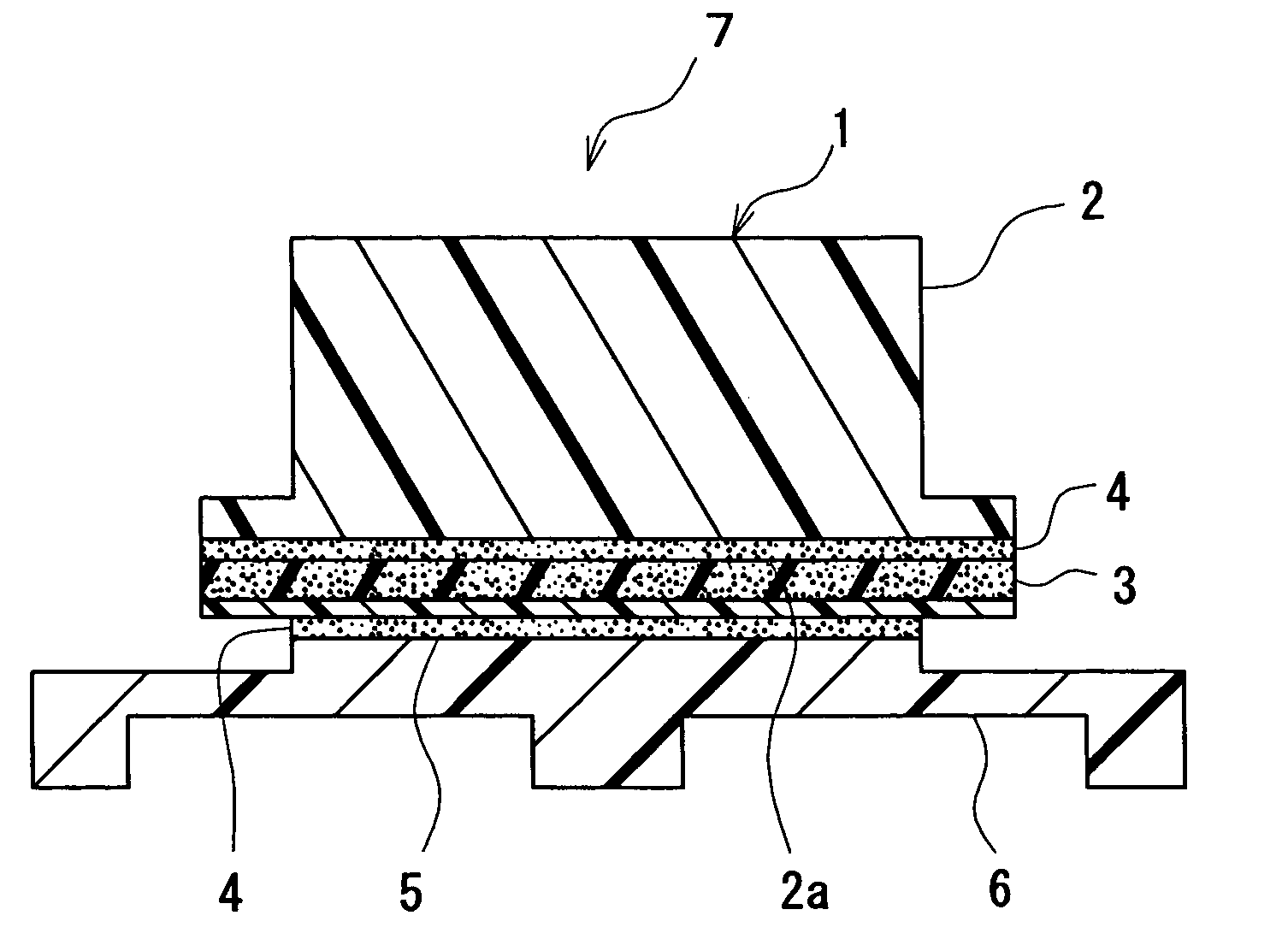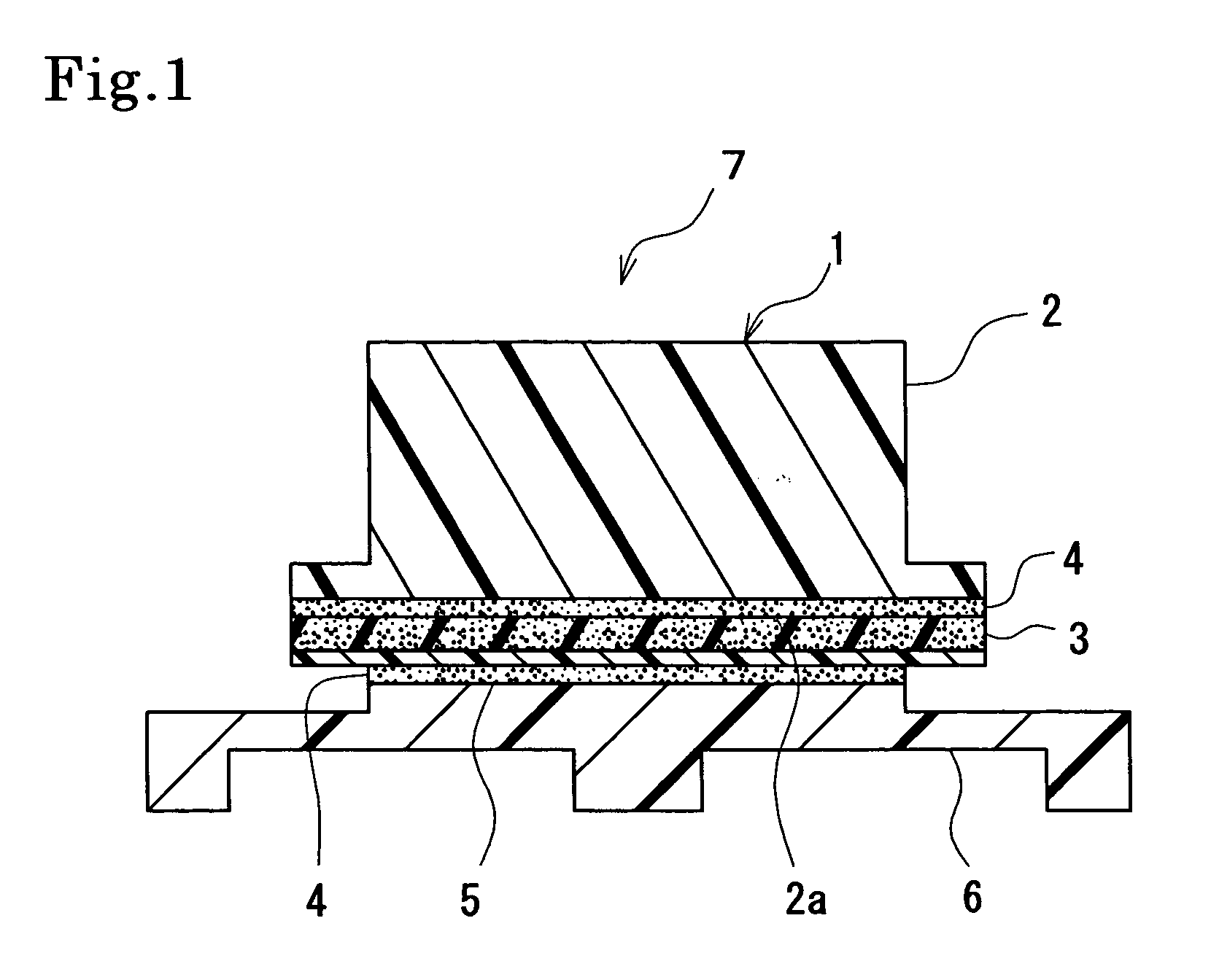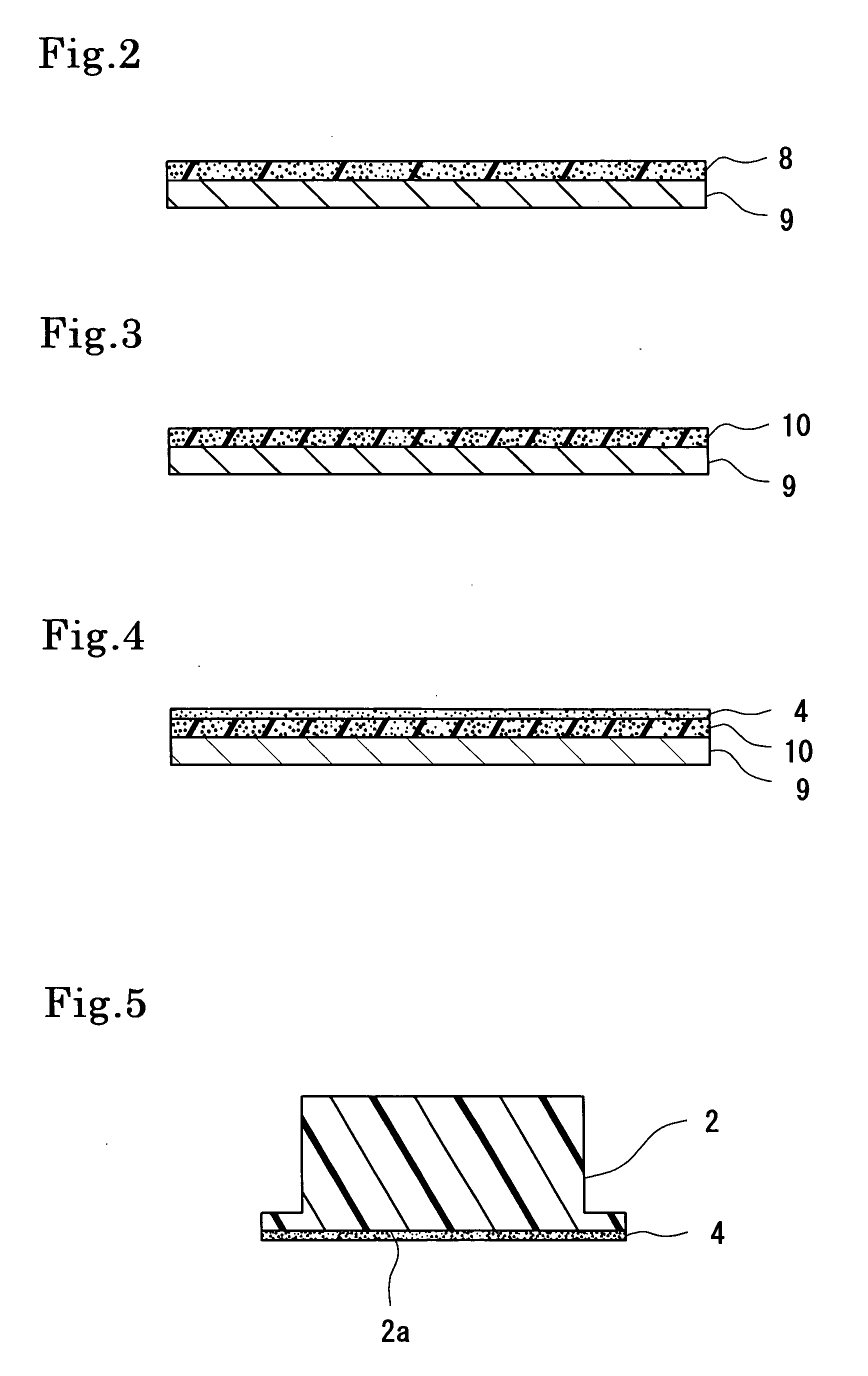Decorative molded object having color design image and method of producing the same
a technology of color design and molded objects, which is applied in the directions of adhesive processes, instruments, transportation and packaging, etc., can solve the problems of inability to meet the requirements of amplification of a production step, inability to reduce the cost, and inability to increase the resolution, etc., to achieve the effect of reducing the cost of production
- Summary
- Abstract
- Description
- Claims
- Application Information
AI Technical Summary
Benefits of technology
Problems solved by technology
Method used
Image
Examples
example 1
of FIG. 1
[0106] Color design data produced by using a personal computer was printed on paper exclusive for an ink jet printer (a sheet having, on a substrate sheet (9) with a thickness of 140 .mu.m made of a polyester film, an image carrying layer (8) with a thickness of 20 .mu.m formed by using boehmite as an inorganic fine particle and polyvinyl alcohol as a binder for bonding the boehmite) by using an ink jet printer "PM 890" (manufactured by Seiko Epson Corporation), thereby forming a coloring agent layer (10) on the substrate sheet (9). Genuine ink for the printer was used as ink for printing. In the meantime, by screen printing, acrylic evaporation drying type ink "CAV Meiban" (manufactured by Seiko Advance Ltd.) was evenly applied onto a back surface (2a) of a key top main body (2) made of a polycarbonate resin molded by an injection molding method in such a manner that a thickness of the ink would be 5 .mu.m. After that, the key top main body (2) was aligned with the substra...
example 2
of FIG. 9
[0123] The acrylic evaporation drying type ink "CAV Meiban" (manufactured by Seiko Advance Ltd.) was evenly applied onto a surface on which formed was the transparent resin layer (5) of the key top (1) for a push-button switch obtained in Example 1 by using each of the samples 1 to 14. After that, an aluminum foil sheet was transferred onto the surface. The resultant key top (21) for a push-button switch was evaluated for transparency of the color design image layer (3) in the same manner as in Example 1. As a result, the transparency was evaluated as "O" in all cases. The aluminum foil sheet used in Example 2 was prepared by printing a silicone based releasing layer (10 .mu.m in thickness) and an epoxyacrylic protective layer (1 .mu.m in thickness) onto a PET film with a thickness of 20 .mu.m, forming an inorganic thin film layer with a thickness of 40 .mu.m made of aluminum thereon by vapor deposition, forming a transparent elastic layer of vinyl chloride-vinyl acetate ba...
example 3
of FIG. 13
[0124] Color design data produced using a personal computer was printed on paper exclusive for an ink jet printer (a sheet having, on a substrate sheet (9) with a thickness of 140 .mu.m made of a polyester film, an image carrying layer (8) with a thickness of 20 .mu.m made of a porous material in which a xerogel prepared by removing a solvent from a silica-alumina composite sol was used as an inorganic fine particle and was bound by polyvinyl alcohol) by using the ink jet printer "PM 890" (manufactured by Seiko Epson Corporation), thereby forming a coloring agent layer (10) for constituting an image composed only of a letter on the substrate sheet (9). Genuine ink for the printer was used as ink for printing. Then, the same transparent resin liquid as that used in the sample 4 of Example 1 was applied onto the surface of the coloring agent layer (10) by a screen printing method, was left for 30 seconds, and was cured through application of ultraviolet light. In the meantim...
PUM
| Property | Measurement | Unit |
|---|---|---|
| viscosity | aaaaa | aaaaa |
| transmittance | aaaaa | aaaaa |
| particle size | aaaaa | aaaaa |
Abstract
Description
Claims
Application Information
 Login to View More
Login to View More - R&D
- Intellectual Property
- Life Sciences
- Materials
- Tech Scout
- Unparalleled Data Quality
- Higher Quality Content
- 60% Fewer Hallucinations
Browse by: Latest US Patents, China's latest patents, Technical Efficacy Thesaurus, Application Domain, Technology Topic, Popular Technical Reports.
© 2025 PatSnap. All rights reserved.Legal|Privacy policy|Modern Slavery Act Transparency Statement|Sitemap|About US| Contact US: help@patsnap.com



